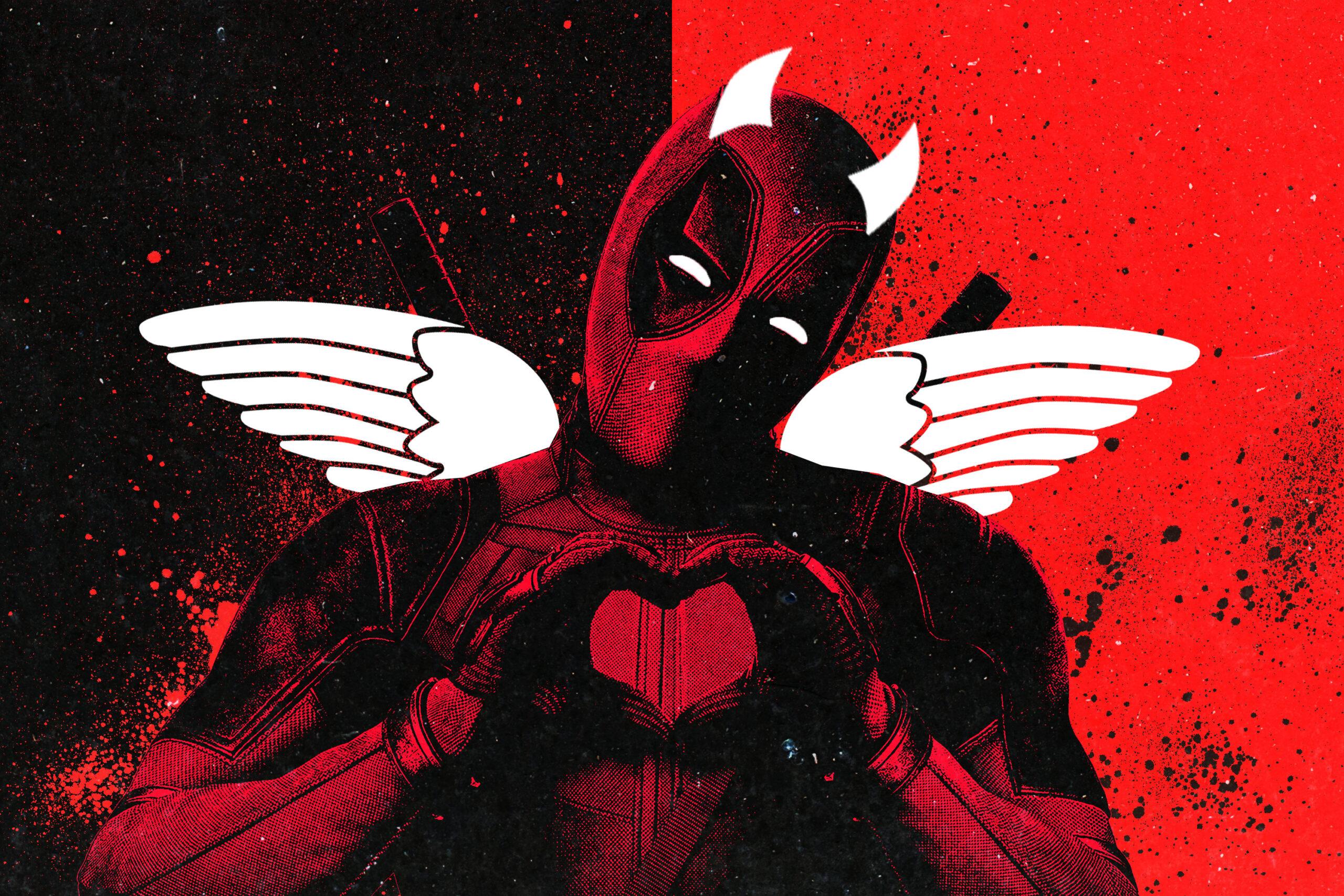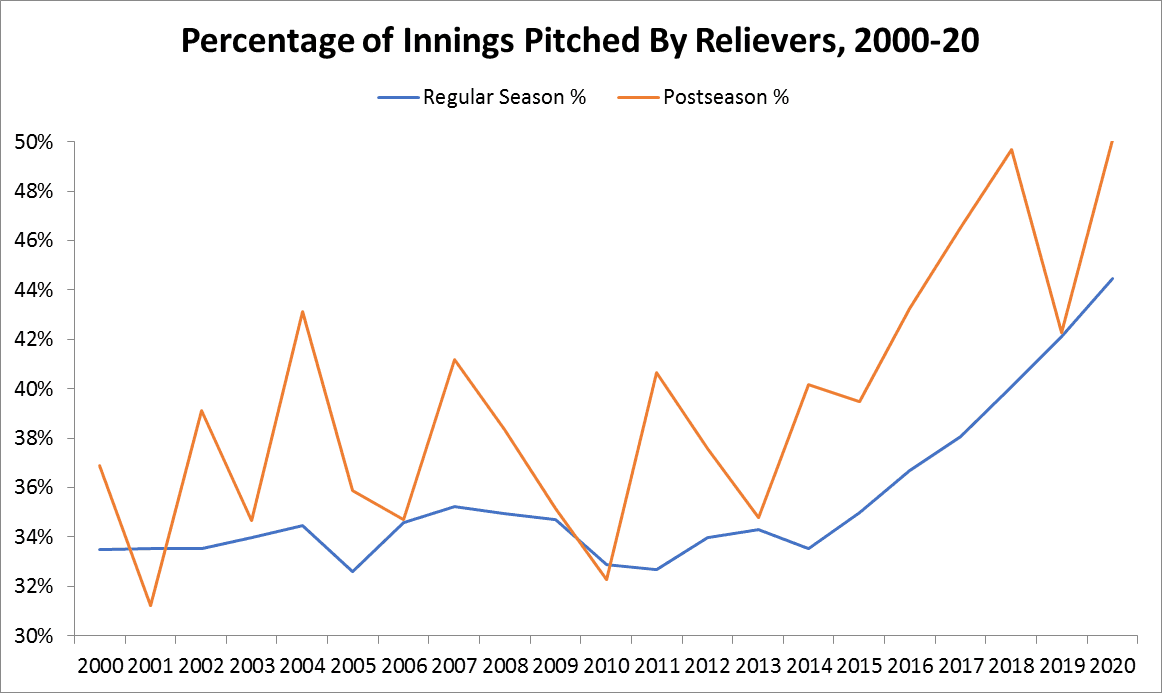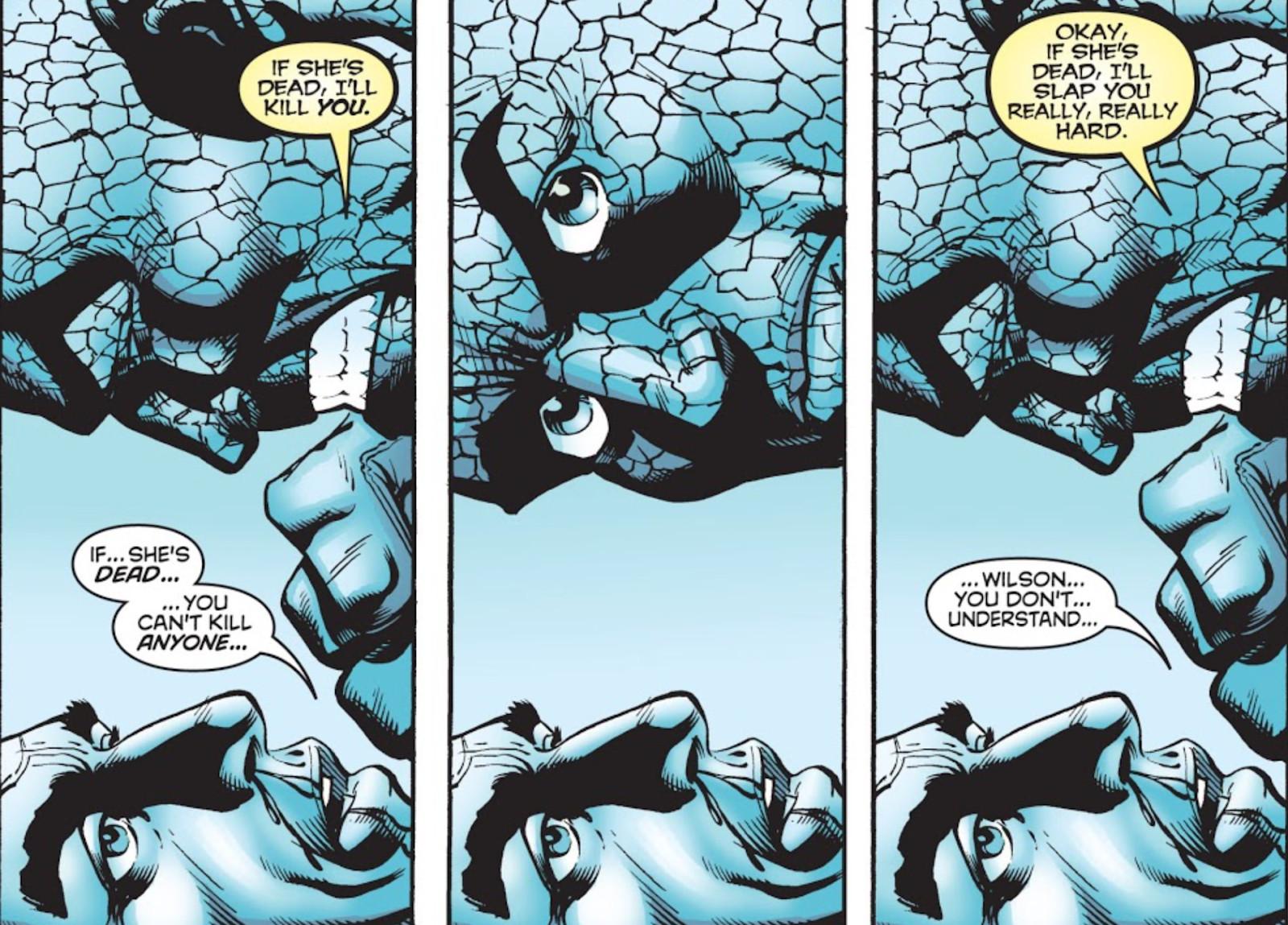
I get it, you know? It’s been less than a month since you watched Josh Brolin stomp through a fictional universe that vaguely resembles this one, brutalizing colorless extras and colorful superhero IP in droves. And you’re about to watch him do it all again. Sigh, right? Thus continues the inexorable march toward exclusively explosion-based, zero-calorie movies, because box-office success. If it helps … well, there will still be CGI, but less of it. And dick jokes! You love those!
Of course I’m talking about Deadpool 2, which came out on Friday, in which Brolin, who still has one movie left as Thanos, moonlights as Cable, a similarly burly character who can also traverse the boundaries of space-time. Although, unlike his counterpart, it’d be difficult to confuse Cable with Grimace on account of his Deadpool antihero being white and not purple; plus there’s the short back and sides and the cybernetic arm. Oh, and the eye. It doesn’t really do a whole lot aside from glowing ominously, but it’s cool, right?
https://twitter.com/VancityReynolds/status/894579873301311490
No, no. “Why are we doing this again?” is a fair question and one I’m willing to answer. The short answer is money. Deadpool was obscenely popular, to the tune of over $783 million in ticket sales worldwide, which might explain the second installment being the widest launch ever for a Fox title––4,349 screens. (Early estimates put Deadpool 2’s opening weekend somewhere between $130 and $150 million.) The medium answer is that Deadpool isn’t a superhero franchise you should have to work very hard to enjoy. That said, here is a longer, more tedious answer, which includes a few comic panels:
Deadpool is like Spiderman, but more Xtreme
Let’s table character origins and just appreciate Deadpool’s design, which—stay with me here—is like if you recreated the penultimate mock-up of the Spidey suit on a Grand Theft Auto server, turned on aim assist, and armed yourself with unlimited weaponry, invincibility, and a lower wanted level. This is the cover from The New Mutants No. 98, in which comic book creator Rob Liefeld, then at Marvel, debuted the Deadpool character in February 1991:

So many ammo pouches. A smoking gun the length of his thigh. A knife that’s at least equal in size. There are also the dual swords to consider, which make him sort of like a ninja. (Ignore that no one alive has feet this shape.) It’s almost as if the “Merc with a Mouth” was cultivated in a test tube with angsty, hormonal teenagers specifically in mind. By this point Marvel no longer really had Peter Parker, who was married and thus slightly more burdened and morose than the fun, wisecracking 20-something he once was. Deadpool, who knew his way around a fart joke (and was totally fine with popping off a head shot), would fill that void. He arrived 12 pages into that New Mutants issue and asked Cable not to take it personally when Deadpool “frosted his old, mechanical butt.”
Which wasn’t cause for readers to double over, by any means, but it did make Deadpool at least superficially funnier than his somber, dogged contemporaries. Deadpool, the movie, when it arrived on Valentine’s Day 2016, capitalized on superhero fatigue in a similar way. It had been a few months since Iron Man et al. had destroyed Sokovia in the process of killing a 10-foot android voiced by James Spader; the MCU was beginning to consider real-world problems like collateral damage and civilian oversight. There were graver, larger issues these movies wanted to be about. Then Some Douchebag’s Film, starring God’s Perfect Idiot and directed by An Overpaid Tool, arrived. My colleague Rob Harvilla says Thor Ragnarok was the film that enticed Marvel properties to consider themselves comedies rather than self-serious dramas, but that’s just recency bias.
Deadpool obliterates the fourth wall
You already know about this part, but Deadpool, from his inception, had always— what’s the word I’m looking for here— lampshaded. But when Christopher Priest (who also penned the best run of Black Panther) took over stewardship of the title in November 1999, he tore the fourth wall down completely. Not only would the character wink back at you as you thumbed through the pages, but Deadpool would also be aware that he was in a comic book. So in addition to removing the distance between performer and performance, Deadpool would throw an arm around you to bring you in on the joke.

The Deadpool movie joyously did the same, speaking directly to you 23 times, although that tally is technically in question, because one of those fourth-wall breaks was inside another fourth-wall break, which is, like, [counts on fingers] 16 walls!
Deadpool knows exactly how to sell itself
Before Wade Wilson there was the DC character Slade Wilson, a different mercenary who also donned a gimp suit to wield swords and guns. For Marvel, Deadpool’s regenerative powers are explained as Wilson being the final failed experiment at Weapon X before the breakthrough with Wolverine. Deadpool’s ostensible team, the X-Force, who are introduced in Deadpool 2, are an offshoot of the X-Men: a team of lesser-known, factory-variant heroes that do the thankless dirty work that Charles Xavier’s gifted, uniformed youngsters would rather not. Deadpool is deliriously great, but on a fundamental level, Deadpool is imitative.
You might have caught Zazie Beetz— who plays Domino, and is excellent— poking fun at the name in the theatrical trailer. “X-Force,” she says. “Isn’t that a little derivative?”
More generally, the marketing campaign has been perfect. A list of things the campaign has found time to pointedly make fun of, aside from the movie itself: Bob Ross; David Beckham; the overwhelming whiteness of late-night television; Celine Dion, but actually, the way you look when Céline Dion destroys your cool; and literally every other Marvel movie.
You don’t need to know anything about Deadpool to enjoy Deadpool
This is probably the largest selling point. Infinity War was incredible and created the exact feeling of devouring a massive crossover comic event. But if we (meaning myself and every other person who shamelessly loves these movies) are being honest with ourselves, asking someone to internalize 18 movies such that they can fully enjoy the 19th installment is a prohibitive ask. Deadpool, by contrast, is game for a laugh and has a very low barrier to entry.
You’ll notice that I’ve gotten this far and have yet to attempt to summarize any sort of backstory. You don’t need it. In fact, it’s a distraction. There’s a moment when Deadpool 2 halfheartedly attempts explication, in an effort to fill out Cable’s character. In picking over the scene to find anything representative of the character’s comic backstory—which is some truly mind-bending shit— I missed, without checking my notes, 500 jokes.
Here’s all you really need to know: it’s tough for Deadpool to die—perhaps impossible, as he was impaled by a piece of rebar and had a building dropped on him in the last movie. There’s the love of his life, Morena Baccarin, and then his few friends; unfortunately T.J. Miller is one of them. Hilarity, and carnage, inevitably ensues, and no convoluted plot can distract you from that.